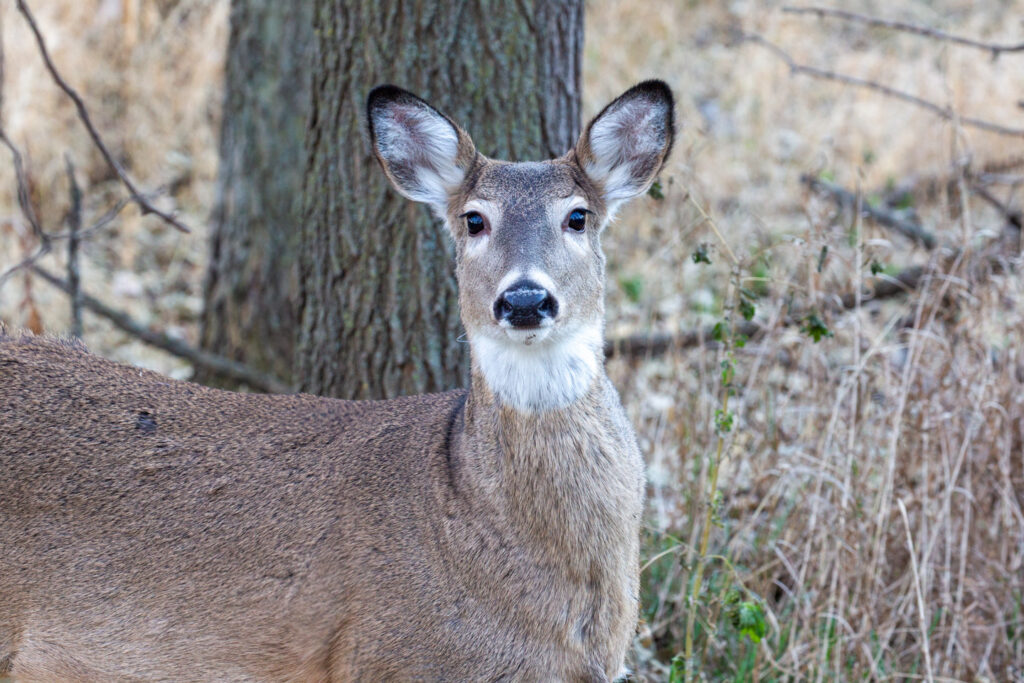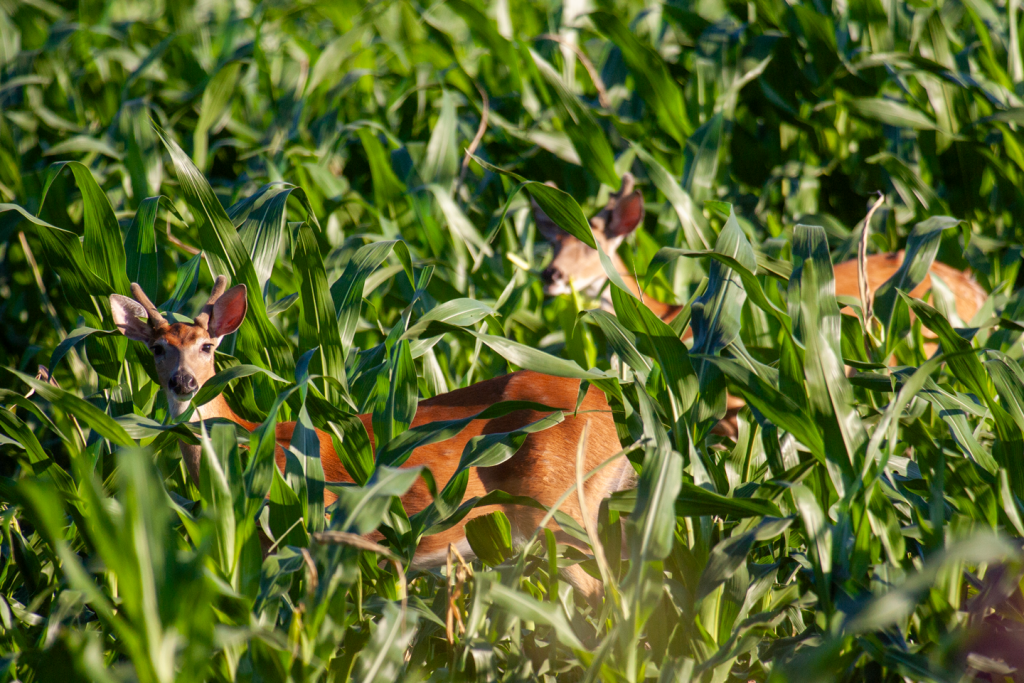Increase antlerless harvest on properties where damage is occurring
- Landowner earn a buck
- Antlerless only permits
- Give permission for set timeframe & rotate hunters
- Find new antlerless hunters
The Nebraska Game and Parks Commission acknowledges wildlife periodically cause damage to agricultural crops, stored crops, fences, tree farms, and other property, and may present a threat to human health and safety. This damage largely occurs due to the use of wildlife habitat by humans for economic purposes, such as agricultural production. Wildlife damage cannot always be prevented, but certain management practices, instituted by the landowner, may reduce or eliminate some damage problems. The Commission has a legal mandate to respond to complaints and take actions necessary to minimize damage when possible.
In all cases, it must be emphasized the wildlife resource is held in trust for all residents of Nebraska to utilize for recreation and education. This wildlife resource does not belong to the Game and Parks Commission, but to all Nebraskans.
Nebraska Game and Parks utilizes a variety of tools in response to depredation, including technical advice, abatement materials and supplies and/or damage-control permits. Not all responses will be appropriate and/or legal for all species.
Contact your local Nebraska Game and Parks District Office to discuss the appropriate response options.
Damage-control permits are only issued for wildlife currently causing damage, such as deer, antelope, elk, turkey, gamebirds and other wildlife species. All city ordinances, county and state laws remain in effect.
Damage-control permits are utilized in instances when normal hunting does not provide enough relief from damage, typically due to timing or access issues. These permits must be requested by a landowner and damage must be inspected.
Damage-control permits are issued to a single landowner, and additional shooters may be identified and listed on the permit in coordination and review with the Commission. Total animals allowed under a permit are typically incremental in number with additional permits added as they are filled. Meat from killed animals must be offered for human consumption, and when males are allowed on permits, the antlers must be turned in to the Commission and cannot be retained by the permit holder.
Contact the Commission via the form below or call or visit your district office for more information about damage-control permits.
Barriers, fencing and other exclusion devices can be a step in preventing wildlife damage. These include:
Hazing or scare devices can make your property less desirable to wildlife. Response options may include:
Other response options to wildlife damage may include:
Game and Parks biologists can help landowners identify options for addressing wildlife-related damage. To speak to a biologist, contact your district office during regular business hours or complete the form below.
Increase antlerless harvest on properties where damage is occurring
Increase pressure to the property
Modify habitat
Communication with Neighbors

The Nebraska Game and Parks Commission’s Antlerless Hunter Database connects hunters who wish to harvest antlerless deer with landowners who are experiencing damage from deer on their property. Hunters who wish to be considered for this program may sign up on the program page, which landowners may view as a list.

It’s no secret to those living in the Cornhusker State: Nebraska is serious about its agriculture. Also evident: Nebraskans are proud of their populations of deer and other big game species. Unfortunately, those animals can sometimes be at odds with landowners’ agricultural goals. Read how one landowner along the Platte River has worked closely with Game and Parks for more than 10 years to find a balance between the white-tailed deer population on his ground with his operations’ business objectives.
Nebraska Game and Parks hosts regular meetings with landowners on regional elk herds, as well as annual big game meetings in December and January and regional depredation meetings as needed. These meetings help keep communication and understanding open among those affected by wildlife management decisions. Game and Parks also communicates regularly about hunting seasons, permits, access and earn-a-buck by landowners.
Discover more information about wildlife damage online at the Wildlife Damage Management Center.